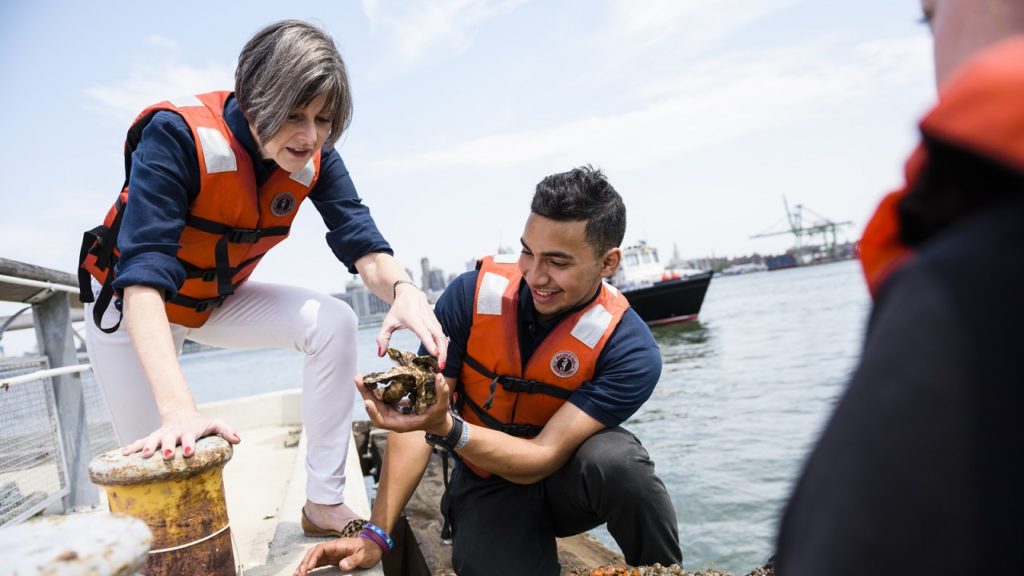 Special to the Philanthropy Journal
Special to the Philanthropy Journal
By Julie Wagner
Corporate social responsibility (CSR) is the broad definition of what companies do to benefit society. CSR includes corporate philanthropy, sustainability, inclusive hiring and procurement, and volunteerism. Corporate philanthropy may take many forms. Philanthropic dollars may be designated as part of an annual budget or corporations may contribute to a foundation designated to fulfill their philanthropic mission.
While the structure and goals of corporate philanthropy vary greatly, most organizations directly tie their philanthropic investments to their corporate mission, or in the case of a privately held company, to the owner’s vision and passions. Some corporations align their giving to benefit their nonprofit partners and to enhance their brand through sponsorships or retail promotions to that benefit a charity. Other corporations imbed philanthropy in their mission and evaluate their investment outcomes on how they improve their community, catalyze their economic sector, train their future workforce or support their employees’ philanthropic passions. Whether you should invest your time to pursue corporate funding is dependent upon understanding their corporate mission and how it aligns with yours. If you decide to move forward you may wonder, “What do corporate funders look for in a potential funding partner?”
![]() At CareFirst BlueCross BlueShield (CareFirst) we are a not-for-profit health insurer. A central part of our mission is to improve the health of the region we serve. As part of our giving program, we meet with more than 175 organizations in person or by phone to discuss potential partnerships. In our experience there are several key strategies to enhance fundraising appeal.
At CareFirst BlueCross BlueShield (CareFirst) we are a not-for-profit health insurer. A central part of our mission is to improve the health of the region we serve. As part of our giving program, we meet with more than 175 organizations in person or by phone to discuss potential partnerships. In our experience there are several key strategies to enhance fundraising appeal.
Strategy #1: Research
Take the time to review a potential funder’s website prior to an initial meeting or call. Most funders’ websites will include key information on their mission, funding priorities, application deadlines, review process, and a list of recently funded programs. By doing research ahead of time, organizations can have more productive and beneficial initial conversations with potential funders. As an example, our guidelines state that we do not fund capital campaigns. Never-the-less a well-known institution came to meet with us with their beautiful brochure on their capital campaign in hand. In this case, time where we could discuss proposal concepts and answer specific questions was instead used to ground the staff on our giving guidelines.
Strategy #2: Establishing a relationship
CareFirst receives nearly 1,000 applications for grant funding and sponsorships each year. The more we – or any other funder — can relate to an organization’s work and see how it relates to our mission, the better the corporate giving staff can serve as advocates for your organization. Make it personal and be ready to think creatively when you meet. Last year we met with a well-established organization that was new to us. They gave us a tour, they discussed monetary investments needed, but knowing we have an active associate volunteerism program, they also included ideas for our staff to be involved. Before submitting that first application, they sent us their newsletters and they gave us examples of how their work impacts underserved communities. When they submitted their application we were ready to hear how we could assist.
Strategy #3: Listening
When you have the opportunity to meet with a potential funder, don’t forget to listen. Detail your needs, but also listen to the funder and learn where there may be overlap between your needs and the funder’s priorities. The importance of listening to the cues provided during these conversations cannot be under-estimated. These cues and signals that can help you put the best proposal forward.
For example, CareFirst met with a local health clinic that we were inclined to support. After the meeting and learning about their greatest needs, we reached back out to the organization to suggest what they might submit and potential funding limits. Despite that effort, the application arrived with a request that was many times larger than the funding ceiling we suggested. Understand that it’s important to balance the organization’s desire to “go for it” in seeking maximum funding, with a realistic view of what may be available based on your research and relationship with the potential funder. The funder may decide it’s easier to make a grant to the organization that “got it,” then to work with you to whittle down a program into an appropriate scope.
Strategy #4: Mission Creep
Whether an organization is a not-for-profit corporation or a for-profit corporation, the Corporate Giving or Corporate Social Responsibility leader likely reports to key members of the corporation’s management team or board of directors. In many cases, there are well defined giving parameters that align with business objectives. That’s the case at CareFirst and we are certainly not unique in this regard. Just as banks often support community development or financial literacy, and many technology companies support STEM education, CareFirst focuses its giving on health related programs. The goal for the nonprofit partners and for CareFirst is to avoid mission creep.
At CareFirst, those of us responsible for charitable giving report to a special committee of the board four times a year on everything we do. Improving health and providing catalytic funding to improve the health care delivery system is core to our mission.
Recently we met with a nonprofit that we had not previously funded. Our strategy in the meeting was to learn more about the organization’s work and, if possible, guide them to submit the strongest proposal with the best chance of navigating our rigorous grants review process. We listened and suggested a subset of their overall work that aligned with our giving philosophy. Rather than beginning a relationship at a point at which we shared philosophical alignment, the organization, — understandably passionate about its own work and mission — opted to press for support for its broader mission. Success in securing funding often hinges on the willingness of your organization to meet – and mold – your funding needs to fit with those of potential funders.
That’s not to say that a nonprofit should stray from its mission because a donor is offering funding. If there’s not a fit, the project may not be successful and both parties will end up disappointed.
So, what do corporate funders want? In business terms, they want a win/win – a partnership where the nonprofit mission aligns with the corporation’s ability to make a difference in the community. Finding the middle ground is the ultimate path to funding success.
Julie Wagner is the Vice President of Community Affairs for CareFirst BlueCross BlueShield and directs the corporate giving program for the not-for-profit health insurer. Through its corporate philanthropy program, CareFirst Commitment, the company contributes more than $40 million annually to a variety of health initiatives throughout Maryland, Washington, DC and Northern Virginia. In addition to CareFirst’s robust giving portfolio of more than 140 active grants, in 2014-2016, CareFirst committed more than $3 million to support maternal and child health programs to improve birth outcomes, and an additional $3 million to expand access to medical care through telemedicine. Ms. Wagner has been with CareFirst since 2009, originally serving as the Grants Program Manager. Her career includes more than 27 years of community affairs experience including the Baltimore Orioles baseball team where she established and led the team’s community outreach programs. Currently Ms. Wagner also serves as Chair of the Washington Regional Association of Grantmakers’ Washington AIDS Partnership Steering Committee, Chair of the BlueCross BlueShield Community Investment and Partnership committee, Commissioner on the Maryland Community Health Resources Commission, and serves on the Boards of the Association of Baltimore Area Grantmakers and Court Appointed Special Advocates for Children-Baltimore.





